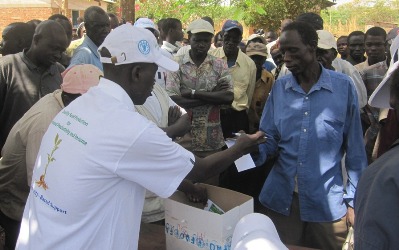16 million people facing food shortages in E. Africa and the Horn
By Julius N. Uma
July 29, 2012 (JUBA) – More than 16 million people, in six African nations, are currently facing food shortages, that range from stressed to emergency levels of food insecurity, a recent report from Famine Early Warning Systems Network (FEWSN) shows.

According to FEWSN, the climate forecast by the Greater Horn of Africa Climate Outlook Forum (GHACOF 31) for the June to September rains reportedly indicates that the performance of these rains will be normal to above normal in areas of East Africa that typically receive this rain.
“These rains are the main rains in most parts of Ethiopia, Sudan, South Sudan and Djibouti,” the report says, while adding that Northern Uganda and the northern and coastal parts of Somalia also receive rains during this season.
However, since it got independence over a year ago, South Sudan has had a murky relationship with neighbouring Sudan, often characterized by clashes, counter accusation and each blaming the other for working to allegedly destabilize the other’s regime.
Also, a poor harvest, macroeconomic instability and widespread conflict in South Sudan could see more than 4.7 million people, almost half of the country’s population, at risk of food shortage; a million of whom could face severe consequences, according to a United Nations food security assessment.
In a related development, the FEWSN report says, about 1.2 million resident or host communities in the drought affected areas of North Darfur face crisis levels of food insecurity, citing poor food availability and high grain prices and in Jebel Mara, due to the impacts of conflict on trade and humanitarian access, as contributing factors.
“The rising pattern of insecurity is expected to cause new displacement, reduce access by humanitarian agencies and reduce the flow of and on food goods from central Sudan to Darfur resulting in even more higher prices,” the report warns.
At least US$427m of the Central Emergency Response Fund (CERF), the U.N Office for the Coordination of Humanitarian Affairs (UNOCHA) said in its annual report, were allocated to 11 U.N agencies and the International Organization for Migration (IOM) last year.
According to the report, climate-related emergencies due to drought, floods and storms received more than $149m from the fund, while over $128m reportedly went to the Horn of Africa for people affected by drought and food insecurity.
(ST).
